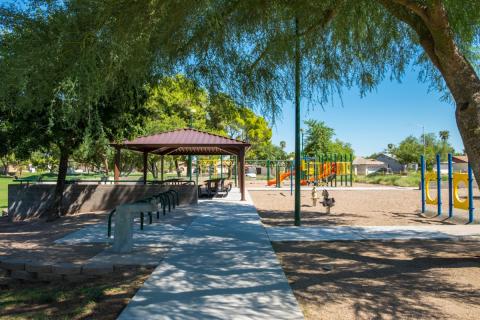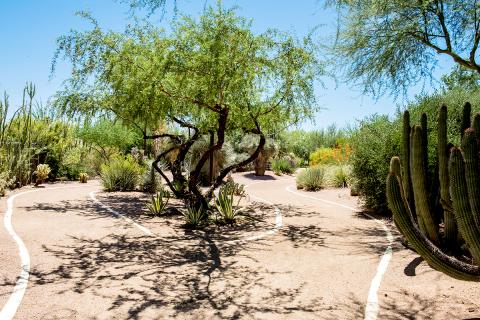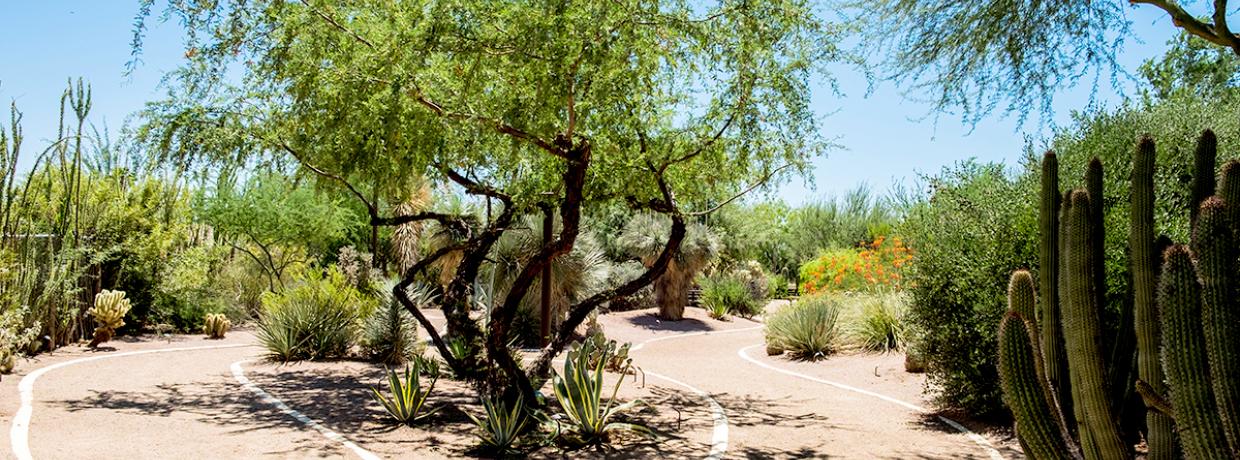
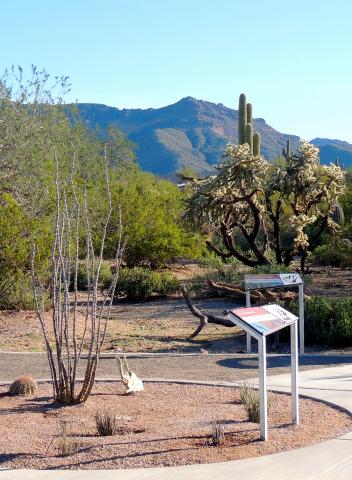 The drought in Arizona is causing businesses and residents alike to carefully evaluate their water use. And the City of Mesa is no different. With a goal of saving an additional five percent in response to the City of Mesa Water Management Shortage declaration that was enacted on May 18, all City departments are looking for ways to meet this target. This is especially crucial in the Parks, Recreation & Community Facilities (PRCF) Department which manages 209 parks with unique playgrounds, first-class athletic fields, 9 aquatic centers, splash pads, trails, 6 recreation centers, convention center, amphitheatre, cemetery and 2 spring training baseball stadiums. But saving water isn’t new to PRCF. In the 1990s, it was spreadsheets and bell curves based on regional climate best practices. Today, their approach to water conservation is multi-faceted – and includes modern design methods, improved efficiency, technology, and increased staff training.
The drought in Arizona is causing businesses and residents alike to carefully evaluate their water use. And the City of Mesa is no different. With a goal of saving an additional five percent in response to the City of Mesa Water Management Shortage declaration that was enacted on May 18, all City departments are looking for ways to meet this target. This is especially crucial in the Parks, Recreation & Community Facilities (PRCF) Department which manages 209 parks with unique playgrounds, first-class athletic fields, 9 aquatic centers, splash pads, trails, 6 recreation centers, convention center, amphitheatre, cemetery and 2 spring training baseball stadiums. But saving water isn’t new to PRCF. In the 1990s, it was spreadsheets and bell curves based on regional climate best practices. Today, their approach to water conservation is multi-faceted – and includes modern design methods, improved efficiency, technology, and increased staff training. The Value of Parks
Urban parks and natural areas contribute to a healthy and vibrant community by shaping the character of the city and meeting the needs of a diverse population. Parks provide safe places for people to play, celebrate, contemplate, and recreate; they inspire personal growth, healthy lifestyles, and a sense of community. They are valued assets for the entire community by enhancing neighborhood connections and a sense of place. Maintaining landscape in these centralized locations for neighborhood activity is important to creating this value in each location.
Park Designs
Installing additional desert-adapted trees provides much-needed shade and allows heat mitigation. New park designs include more low-water-use plants and limited locations for grass focused on recreational use, such as in sports fields and areas around playgrounds. Many parks, such as Desert Arroyo, Desert Trails and Signal Butte Park, use no or minimal turf and highlight beautiful native desert plants and landscaping. In sites such as Fiesta Park where sports fields are a key component, the ball diamonds are grass, and the rest of the park is Xeriscape with low-water-use plants. All parks are designed to provide recreational opportunities that meet the diverse needs of Mesa residents.
Technology
PRCF has invested in technology and equipment to save time, money, and water. A centralized irrigation control system constantly checks for irregularities in the system and can shut down affected areas within minutes if a leak is detected. Twelve individual weather stations offer the ability for microclimate monitoring throughout the city. Rain sensors are in place so if one registers at least a ¼-inch of rain at a park, it initiates an irrigation shutdown sequence for that location and those nearby.
Waterfluence is a landscape water management system that uses technology to monitor water use at Mesa parks. Based on the amounts of desert and grass landscaping, a monthly water budget is developed for each park that details the optimal amount of water needed to maintain plant life. This recommended budget is then compared against actual usage to check for water efficiency at each location. If a park needs to improve its efficiency, irrigation schedules can be adjusted to ensure that water use is on target.
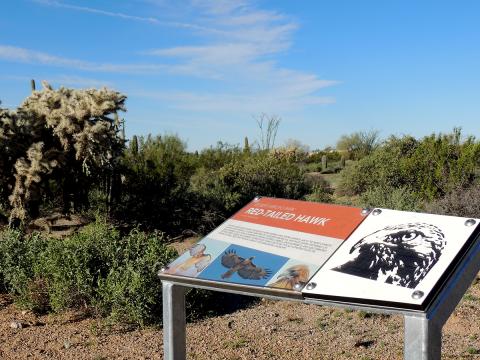
Staff Training and Mentoring
PRCF is dedicated to supporting professional training opportunities for its staff members. Some of the training and certifications include the University of Arizona Smartscape and Advanced Smartscape training, Desert Botanical Garden Desert Landscape School, water auditing certification from the Irrigation Association and the local horticulture conferences. In addition, the department has several International Society of Arboriculture certified arborists. The graduates of these programs educate and mentor other team members, and staff can seek out their expertise when questions arise. The employees of PRCF take their role as good stewards of the environment seriously, and this has been going on since well before the shortage declaration.
The City of Mesa Parks, Recreation & Community Facilities Department relies upon dedicated staff, partner organizations, and volunteers to provide the residents of Mesa with recognized and outstanding facilities and programs to enhance their quality of life.
For additional information about the Parks, Recreation & Community Facilities Department, visit www.mesaparks.com.



